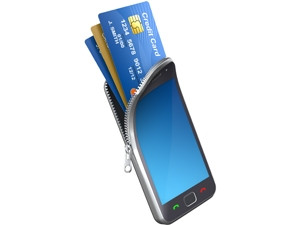
The Internet of things is one of the technology trends that started gaining traction in 2014. Ericsson ConsumerLab's annual report shows, going into 2015, consumers want technology and connectivity integrated into all facets of daily life - in everything from bathroom mirrors to sidewalks and medicine jars.
Michael Bj"orn, head of research at Ericsson ConsumerLab, says the cumulative effect of smartphones becoming part of mainstream society is astonishing. "As consumers, we try out new apps and keep the ones we think improve, enrich or even prolong our lives at such a rapid pace that we don't even notice that our attitudes and behaviours are changing faster than ever."
Every year, Ericsson ConsumerLab forecasts the top 10 consumer trends expected to characterise the year ahead in technology. The fourth edition of this report was born out of global research, with a special focus on smartphone owners aged 15 to 69 in Johannesburg, London, Mexico City, New York, Moscow, San Francisco, S^ao Paulo, Shanghai, Sydney and Tokyo - statistically representing the views of 85 million frequent Internet users.
These are the 10 hot consumer trends for 2015 and beyond:
1. The streamed future: Media use patterns are globalising. Viewers are shifting towards easy-to-use on-demand services that allow cross-platform access to video content. 2015 will be historic as more people will watch streamed video on a weekly basis than broadcast TV.
2. Helpful homes: Consumers show high interest in having home sensors that alert them to water and electricity issues, or when family members come and go.
3. Mind-sharing: New ways to communicate will continue to appear, offering us even more ways to keep in touch with our friends and family. Many smartphone owners would like to use a wearable device to communicate with others directly through thought - and believe this will be mainstream by 2020.
4. Smart citizens: The idea of smart cities is intriguing - but a lot of that intelligence may actually come about as a side-effect of the changing everyday behaviours of citizens. As the Internet makes us more informed, we are in turn making better decisions. Consumers believe traffic volume maps, energy use comparison apps and real-time water quality checkers will be mainstream by 2020.
5. The sharing economy: As the Internet enables people to efficiently share information with unprecedented ease, the idea of a sharing economy is potentially huge. Half of all smartphone owners are open to the idea of renting out their spare rooms, personal household appliances and leisure equipment, as it is convenient and can save money.
6. The digital wallet: 48% of smartphone owners would rather use their phone to pay for goods and services, and 80% believe the smartphone will replace their entire wallet by 2020.
7. My information: Although sharing information when there is a benefit is fine, smartphone owners see no point in making all of their actions open to anyone. Forty-seven percent of smartphone owners would like to be able to pay electronically without an automatic transfer of personal information. Fifty-six percent of smartphone owners would like all Internet communication to be encrypted.
8. Longer life: Smartphone owners see cloud-based services of various kinds giving them the potential to live healthier and longer lives. Jogging apps, pulse meters and plates that measure food are believed to help prolong our lives by up to two years per application.
9. Domestic robots: Consumers are welcoming the idea of having domestic robots that could help with everyday chores, and 64% also believe this will be common in households by 2020.
10. Children connect everything: Children will continue to drive the demand for a more tangible Internet, where the physical world is as connected as the screens of their devices. Forty-six percent of smartphone owners say children will expect all objects to be connected when they are older.
Ultimately, says Ericsson, consumers are becoming more comfortable with ideas that once seemed beyond imagination.
Share